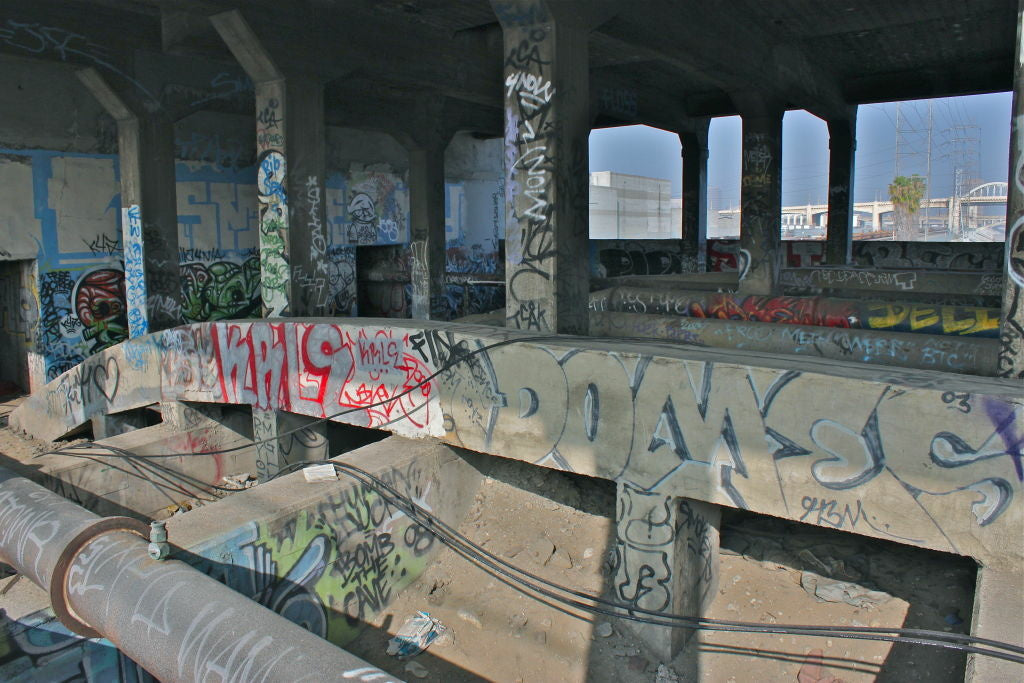The Birth of a Cultural Phenomenon
Graffiti art, a form of self-expression and visual communication, has a rich history rooted in the vibrant streets of Southern California. Emerging in the late 1960s and early 1970s, graffiti art quickly became a powerful medium for marginalized communities to voice their experiences and challenge social norms.
The Influence of Chicano Culture
In Southern California, the origins of graffiti art can be traced back to the Chicano culture. Influenced by Mexican muralism, Chicanos began using walls as canvases to convey their identity, struggles, and aspirations. These early muralists laid the foundation for the graffiti movement to flourish. Mexican muralists like David Alfaro Siqueiros and Diego Rivera, with their grand-scale works of art depicting Mexican heritage and social issues, left an indelible mark on the Chicano art scene.

The Rise of the Cholo Style
One distinctive aspect of graffiti art in Southern California is the incorporation of the Cholo style. Cholos, Mexican-American gang members, played a significant role in shaping the aesthetic of graffiti. Their bold lettering, intricate designs, and unique hand styles became iconic elements of the art form. Cholo art not only added a layer of complexity to graffiti but also gave it a sense of identity closely tied to the streets of Southern California.

The Birthplace: East Los Angeles
East Los Angeles, with its vibrant Chicano culture, served as the epicenter for the birth of graffiti art. The walls of the city became a canvas for artists to express their creativity and share their stories. It was in these streets that influential graffiti crews like K2S (Kill 2 Succeed), UTI (United Artists), and CBS (Can't Be Stopped) emerged, leaving their mark on the urban landscape. East LA's unique blend of cultures and its socioeconomic challenges provided fertile ground for graffiti to flourish, allowing artists to channel their energy and creativity into their art.
The Spread of Graffiti Culture
As the graffiti movement gained momentum, it started to spread beyond East Los Angeles. Artists from different communities and backgrounds began adopting the art form, each adding their unique style and perspective. From the streets of Compton to the walls of San Diego, graffiti art became a powerful medium of expression for a generation. This spread of graffiti culture reflected the diversity of Southern California's population and enriched the art form with a multitude of influences and voices.

Legitimization and Mainstream Recognition
Despite its origins as an underground art form, graffiti art gradually gained recognition and legitimacy. Museums and galleries started showcasing graffiti artists' works, acknowledging their talent and cultural significance. This recognition helped elevate graffiti art from mere vandalism to a respected art form. Notable artists like Shepard Fairey, who emerged from the skateboarding scene, bridged the gap between street art and the mainstream art world, further legitimizing graffiti as a valid form of artistic expression.
A Lasting Cultural Impact
The origins of graffiti art in Southern California laid the groundwork for a cultural movement that continues to thrive today. It provided a platform for marginalized communities to reclaim public spaces and challenge societal norms. Graffiti art remains a powerful tool for self-expression, activism, and storytelling. Its evolution from the streets of Southern California to global recognition showcases the enduring influence of this remarkable art form, rooted in the rich tapestry of the region's culture and history.


